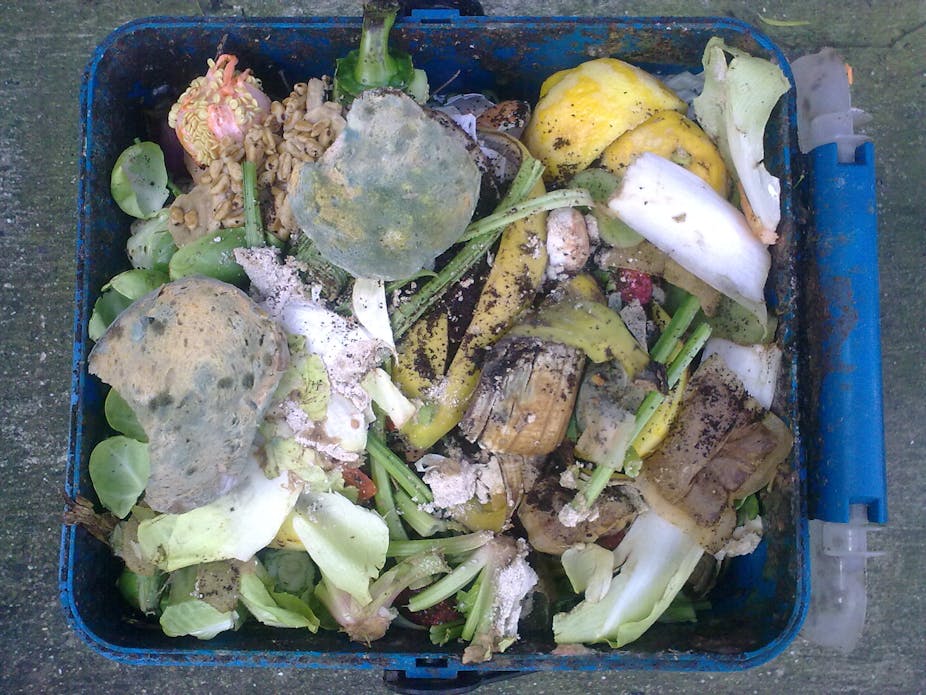Our awareness of food waste is increasing all the time, yet we continue to throw away vast amounts of produce even when we don’t need to. We are getting tired of being lectured on our habits so its time to start thinking practically about how to change our ways, and digital technologies can play a significant role in this.
There has been a 21% reduction in food waste in the UK and EU in the last five years. But the problem remains, and rather than trying to convince us that food waste is bad (we already know that), we need new ways to shop, cook, eat, and throw away food. These new approaches can be good for the environment and help families and businesses save money.
Why do we chuck food?
Few people actively want to waste food, yet households throw away as much as six full meals a week. Although supermarket promotions and inefficiencies in the distribution cycle are often blamed for a large proportion of waste, research suggests that people’s hectic lifestyles, knowledge about food and food labels and tendency towards large serving sizes are also very much part of the problem.
In research with Austrian and British households, we found that food waste does not happen as a result of a single act such as shopping or cooking, but by the connections between these activities. Having an active social life, for example, can affect your shopping habits. You may have less time to shop and find that fewer supermarkets are open when you do get round to buying food. These might be smaller supermarkets where food might be packaged in larger quantities. So instead of buying a single onion for your dinner that evening, you may find that you have to buy a kilo. There are other complicating factors, such as knowing what you already have at home when you are in the supermarket, that can lead to you throw away more food in the end.
Digital technology is helping to alleviate these problems, by connecting the spaces (such as the home and supermarket) and connecting people.
News from inside your fridge
A vision of a technology future is the refrigerator that knows when the milk is running out and orders more from the supermarket. This form of just-in-time grocery shopping might reduce the need to buy in bulk as part of a weekly shop.
We have worked with a FridgeCam prototype which allows shoppers to see what they have in the fridge at home. Although the results were a little unexpected.
Rather than checking the contents of the fridge while they were in the supermarket, some people found it useful to watch how and when they took food out of the fridge. The routines of food consumption can help us to understand when we might really need that extra milk and when we might be buying more than we need.
Miles to go
We should also consider the impact of food production on our food waste. One way of doing this is to look at food miles – the length of distance a product travels before reaching our plate. We’re really not making much progress in this area. According to a recent survey, just 6% of shoppers avoided buying products because they were concerned about food miles.
This might be because the concept of food miles is not particularly straightforward and we struggle to make sense of it. Digital technology could play a part here too, such as if consumers could watch videos about where coffee is grown and make purchasing decisions based on what they have learnt. Of course businesses can leave a corporate mark all over such videos at the moment, but the internet of things could change that. If all the products on the supermarket shelf could be scanned to reveal their history, you could independently trace the origins of everything you buy and easily find out how far it has travelled to make it onto the shelf of your local shop.
Breaking the bread online
Food has always been at the centre of community and family life.
In the digital age, online food sharing communities are helping people share leftover food. Whether it is to swap a glut of home-grown produce or to offer a soon-to-expire food item, food sharing communities help us connect with other people to reduce the amount of food we throw out.
These new communities also provide a platform for sharing information about new ways to find food, such as through dumpster diving for free groceries. Although this is not yet a widespread phenomenon, the growing number of people looking to alternative food cultures could soon put pressure on retailers to think about the way they waste food as a result of their centralised distribution practices.
Our existing social networks can even be used to shame us into action. With BinCam, a household bin with a camera in the lid, our food waste crimes are shared with our friends on our Facebook page.

When the camera clicks we start to pay attention to our otherwise unconscious behaviour. You might balk at the idea of broadcasting your kitchen detritus online or at seeing what lurks at the bottom of your friend’s bin when you log in but, it turns out, people soon start to take part in playful competition when they start using BinCam.
Many of these digital solutions to food waste are at an early stage in development and many more are still just aspirations for the future. But they help us to understand our own eating, shopping and cooking habits a bit more, which can only be a good thing as we try to bring food waste figures down in the future.

